February 27th, 2023
Since also today very good weather was predicted, we got on the road again very early. At 5:30 a.m. we were already in the car to experience the sunrise at Fuji. The destination was the location from yesterday’s sunset, Lake Yamanakako. We drove to the same place where we had been the day before. Apparently, however, we were not the only ones who had the idea.
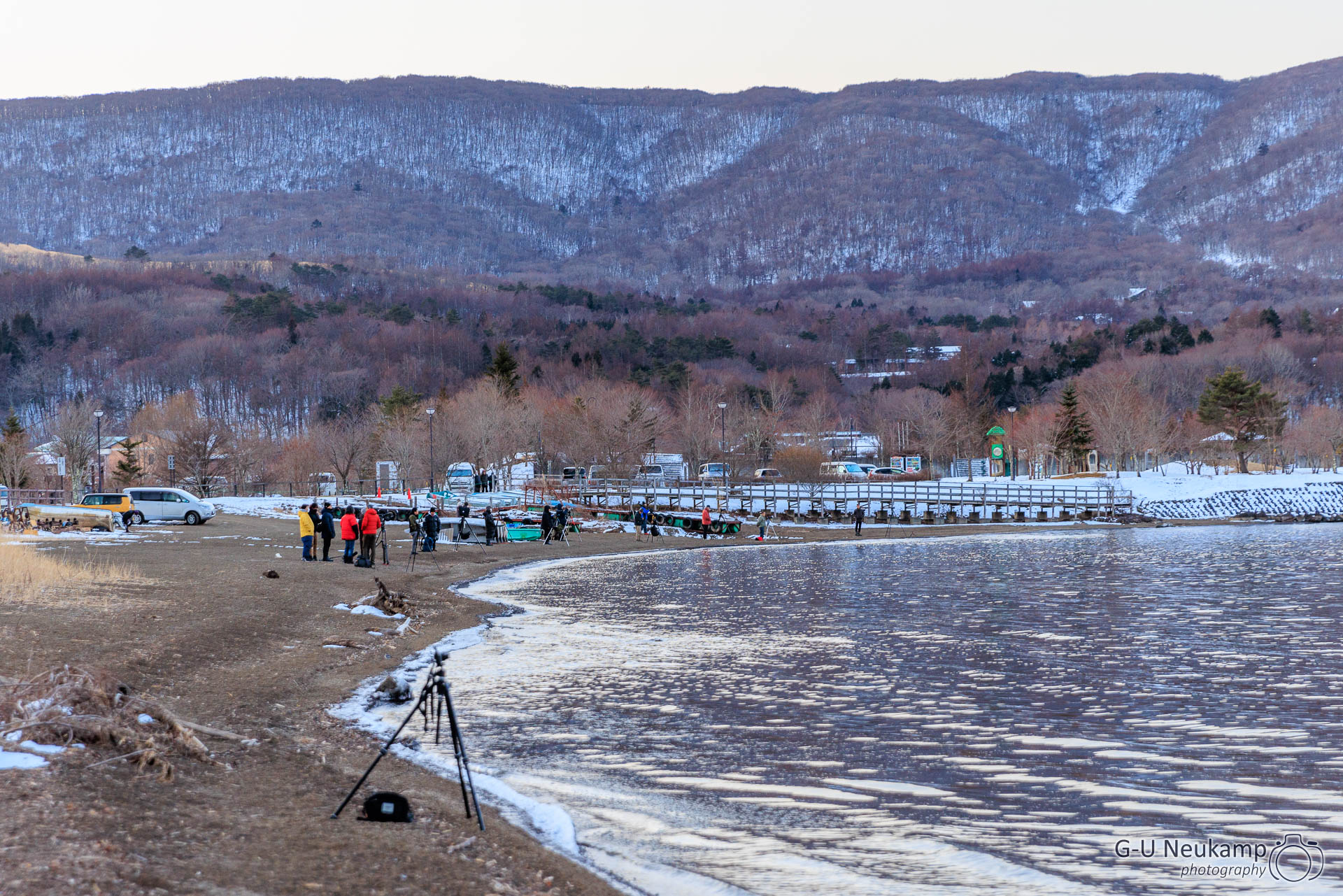
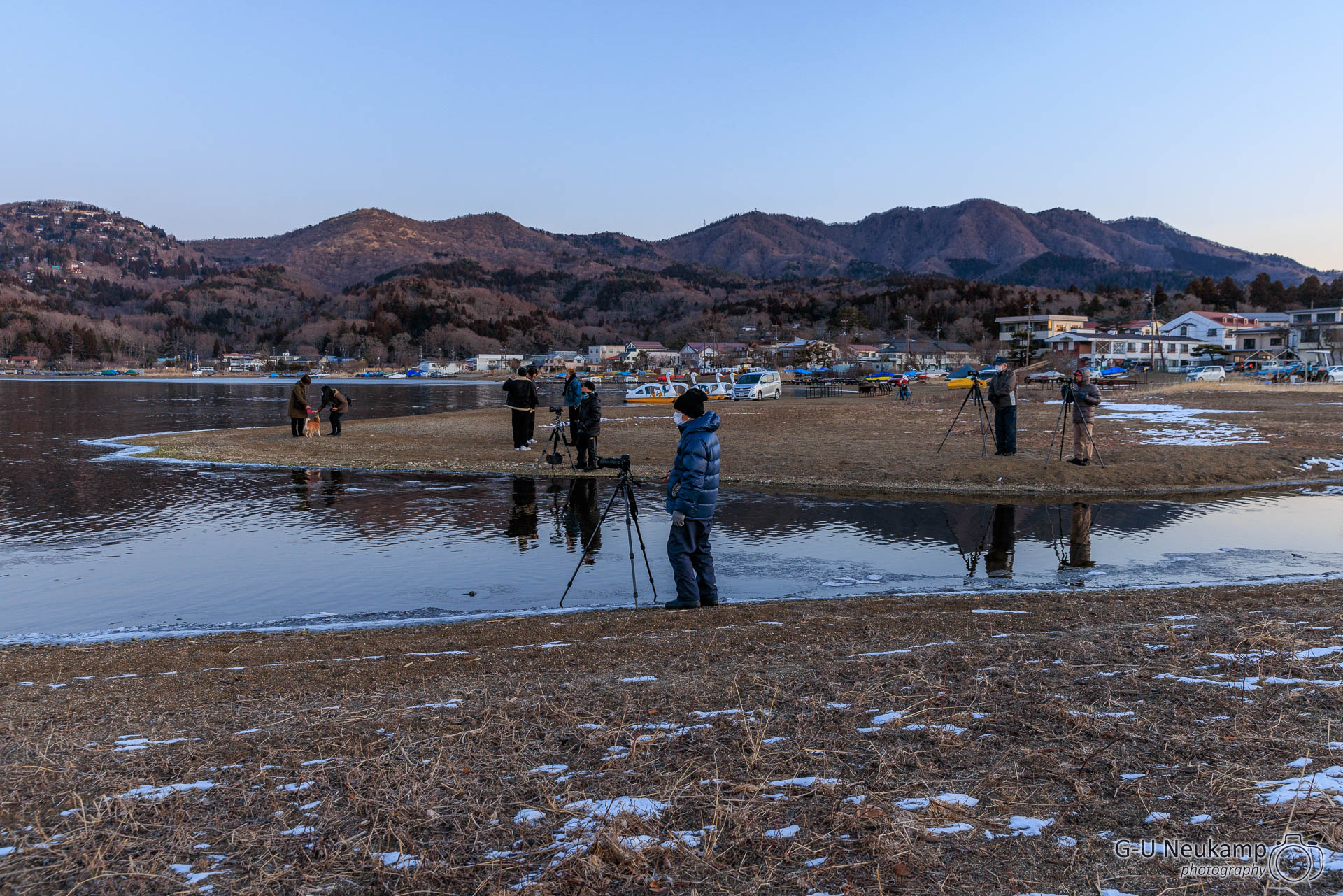
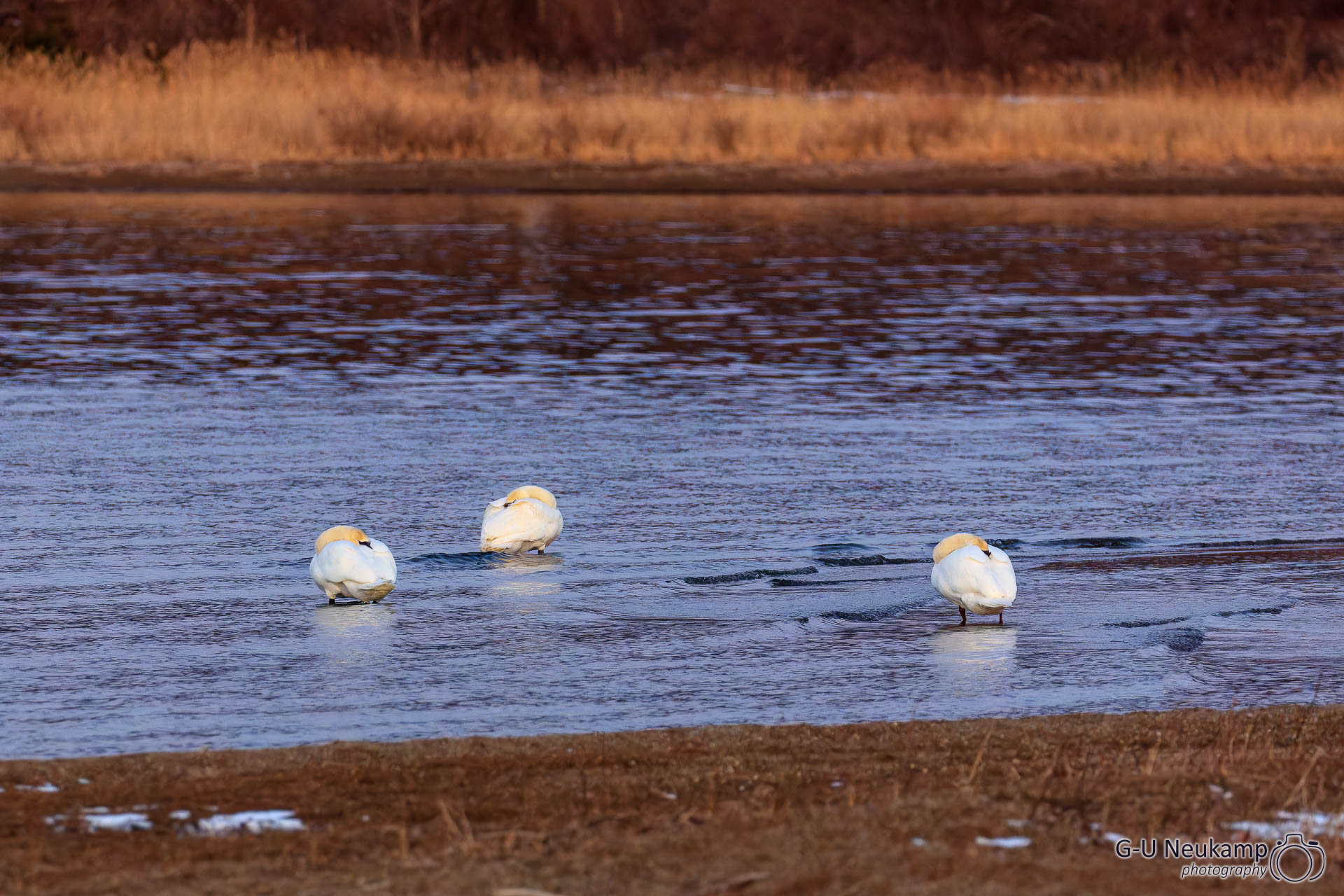
All around us we found several photographers who had set up cameras of all price ranges on tripods. One photographer had obviously even spent the entire night at the location. We found his car again at the same place as the night before, in front of it he had set up a camera, apparently to create a timelapse. When we arrived, the swans were still sleeping near the shore.
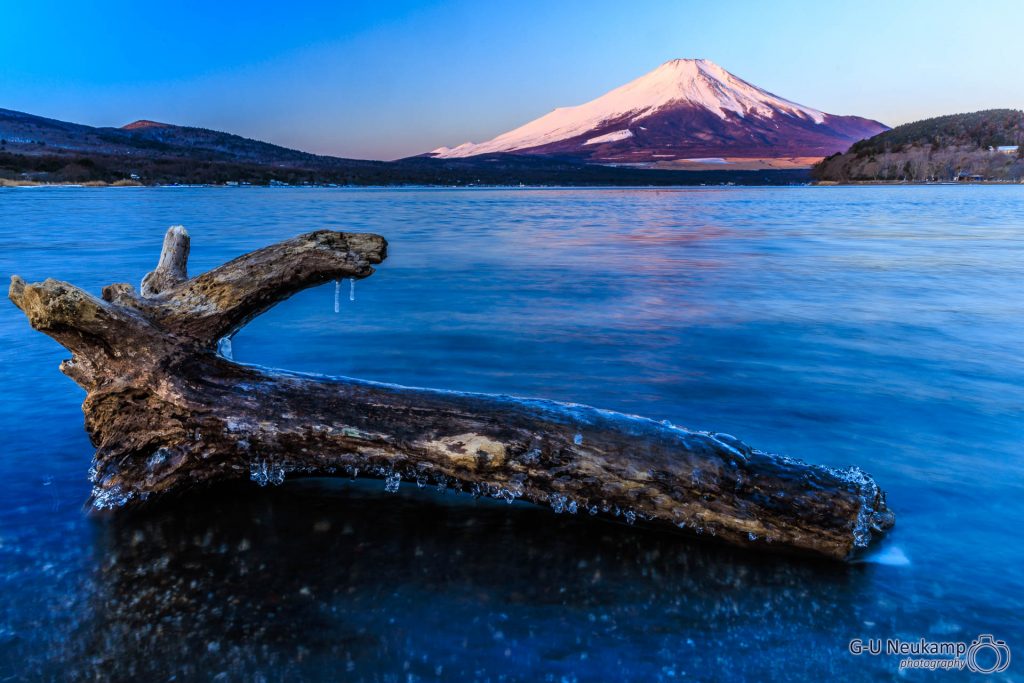
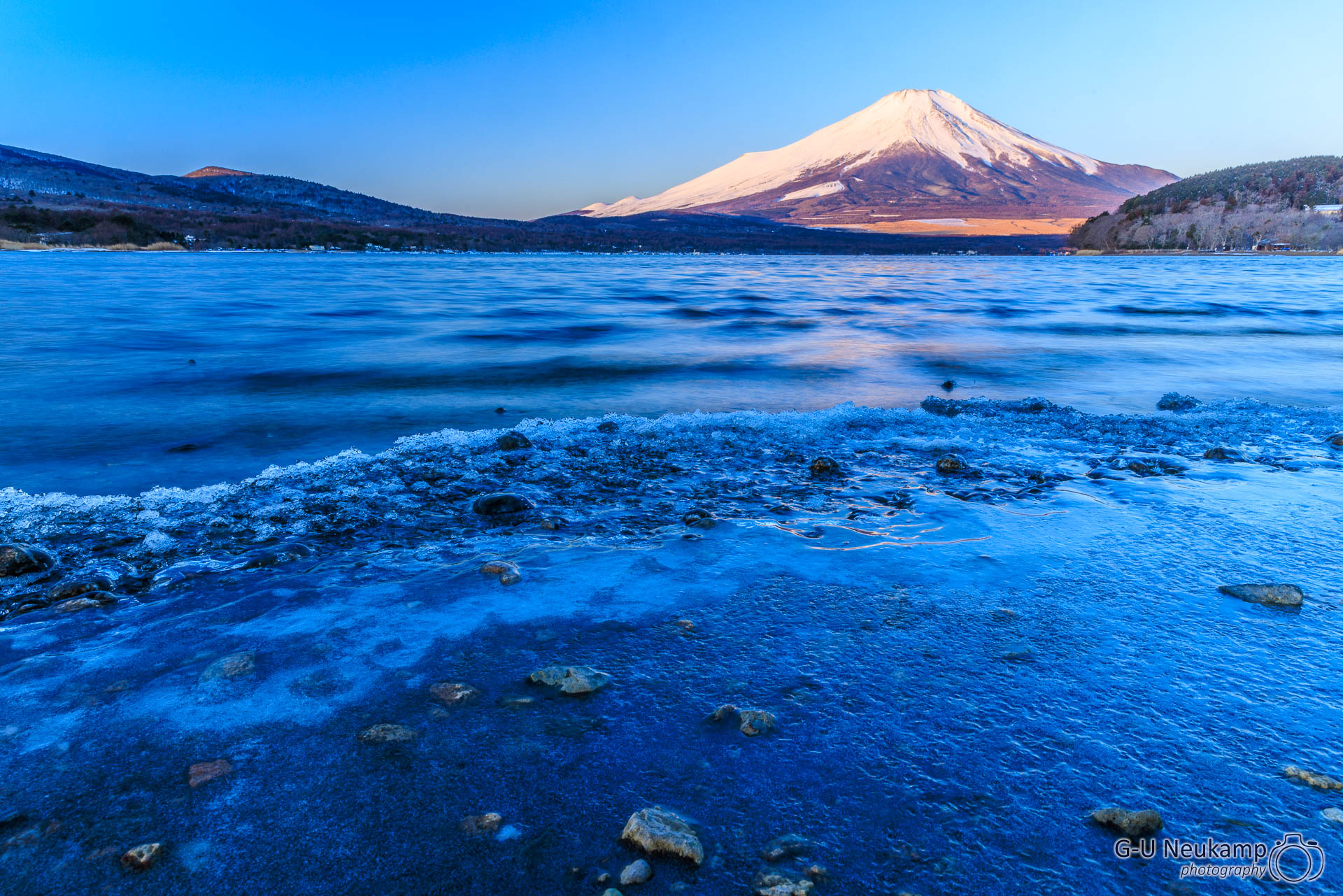
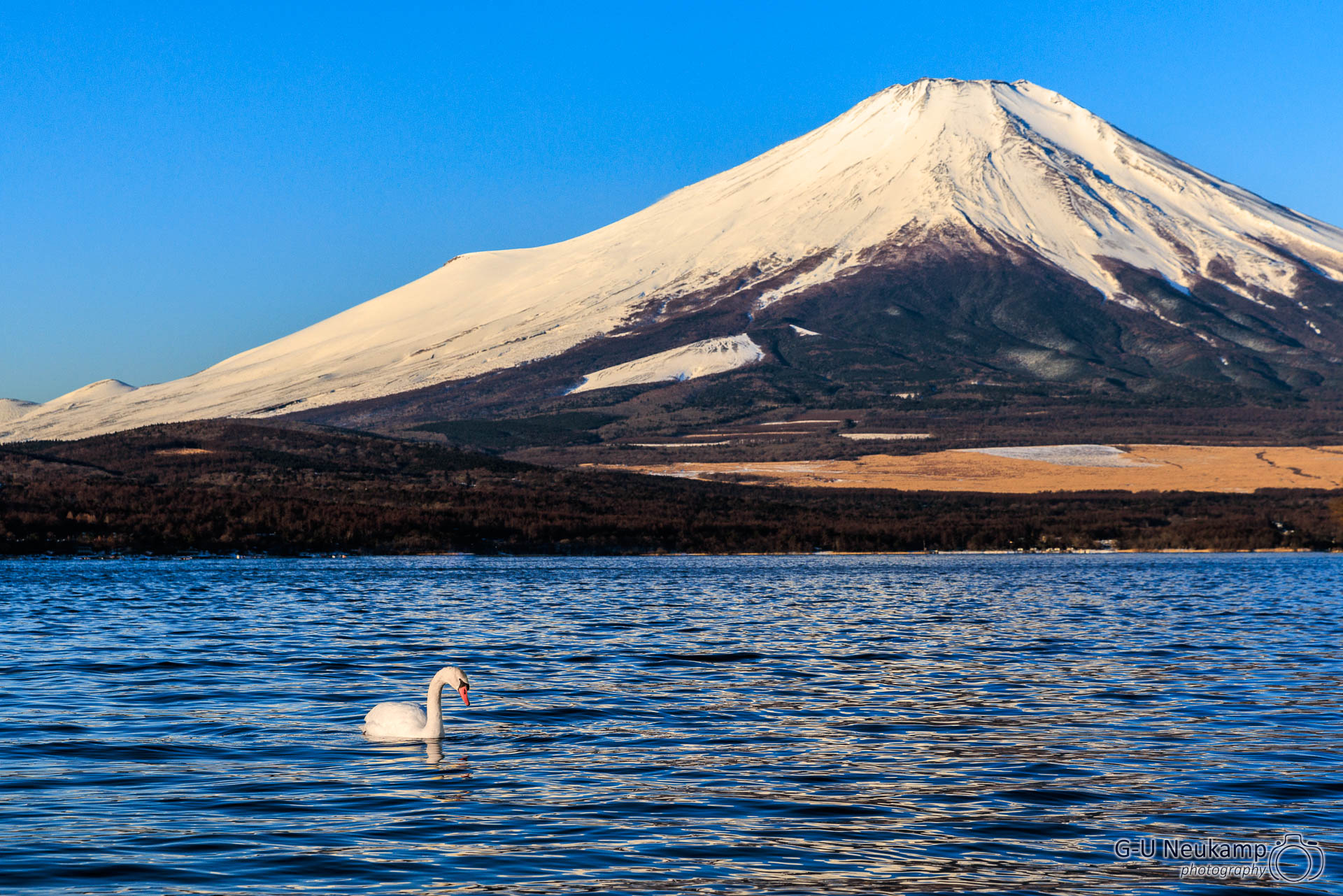
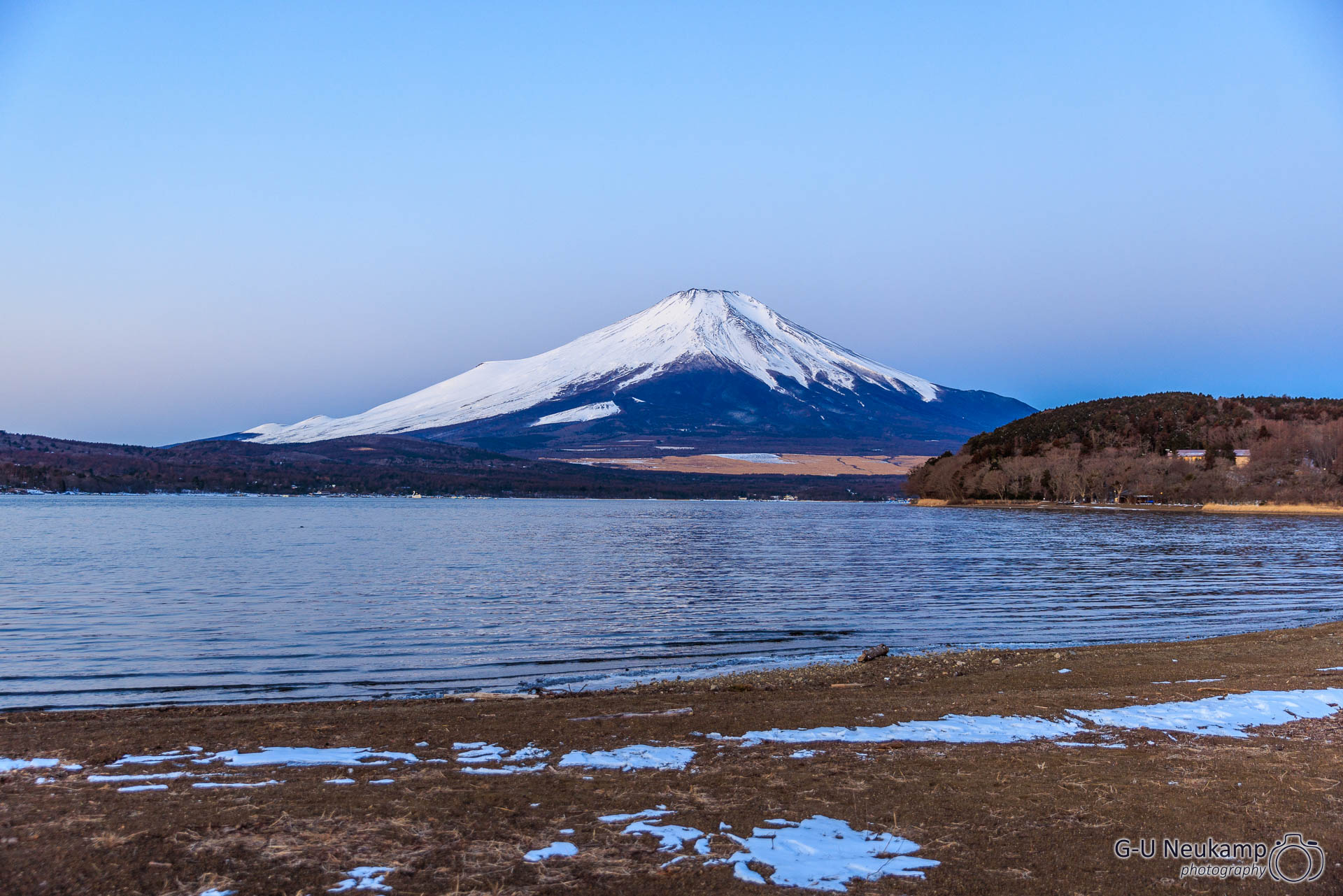
At sunrise it was again very cold at Lake Yamanakako, as you can see from the icicles on the tree trunk above. After a short time, the swans were also awake again.
After an extensive photo session, we drove on to Hakone at Lake Ashi. There is a shrine and a very photogenic torii directly in the lake again. Here is a first picture with the drone:

Hakone Shrine (jap. 箱根神社, Hakone-jinja) is a Shintō shrine on the shores of Lake Ashi in the Japanese city of Hakone in Ashigarashimo County, Kanagawa Prefecture. The shrine is also known as Hakone Gongen (箱根権 現).
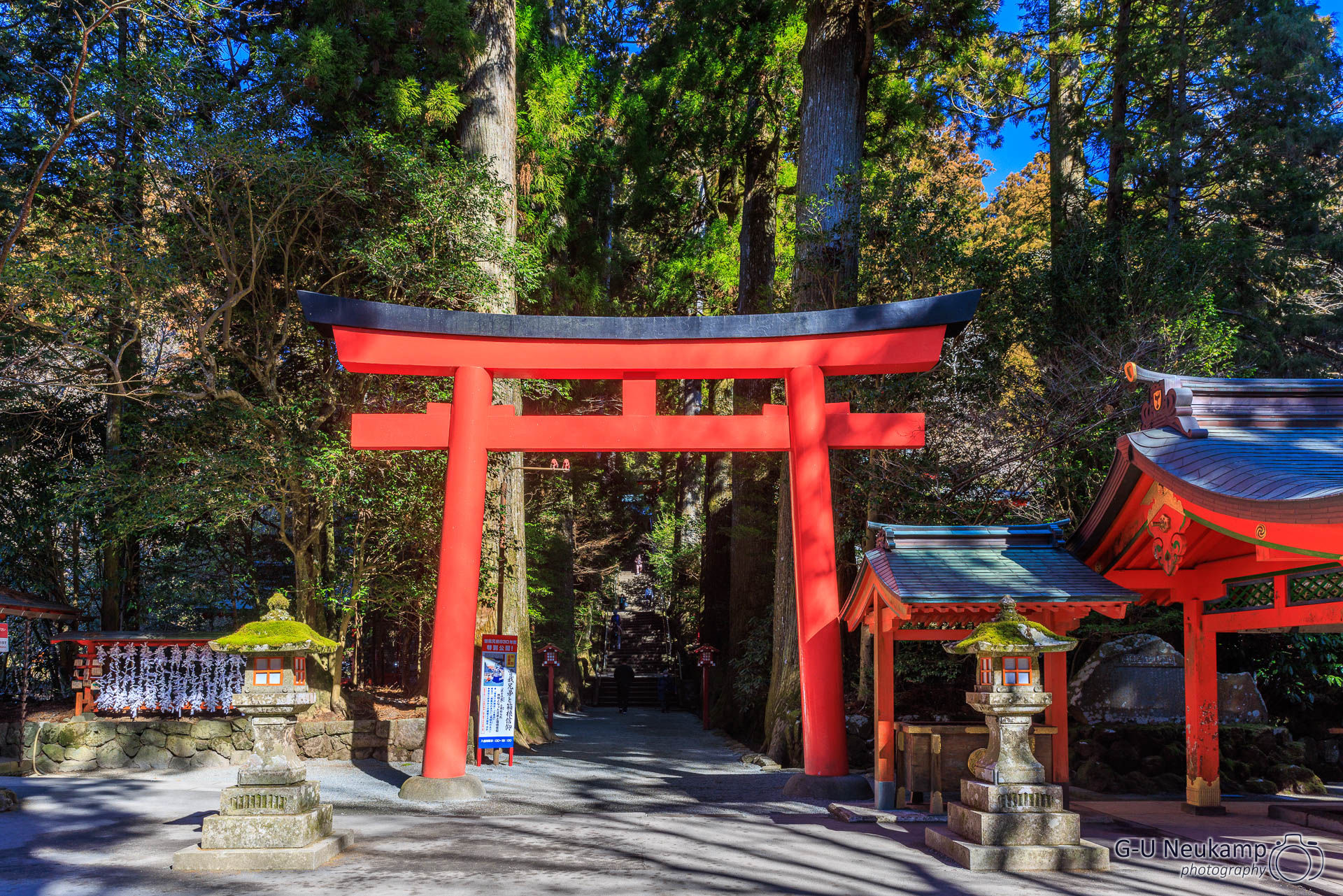
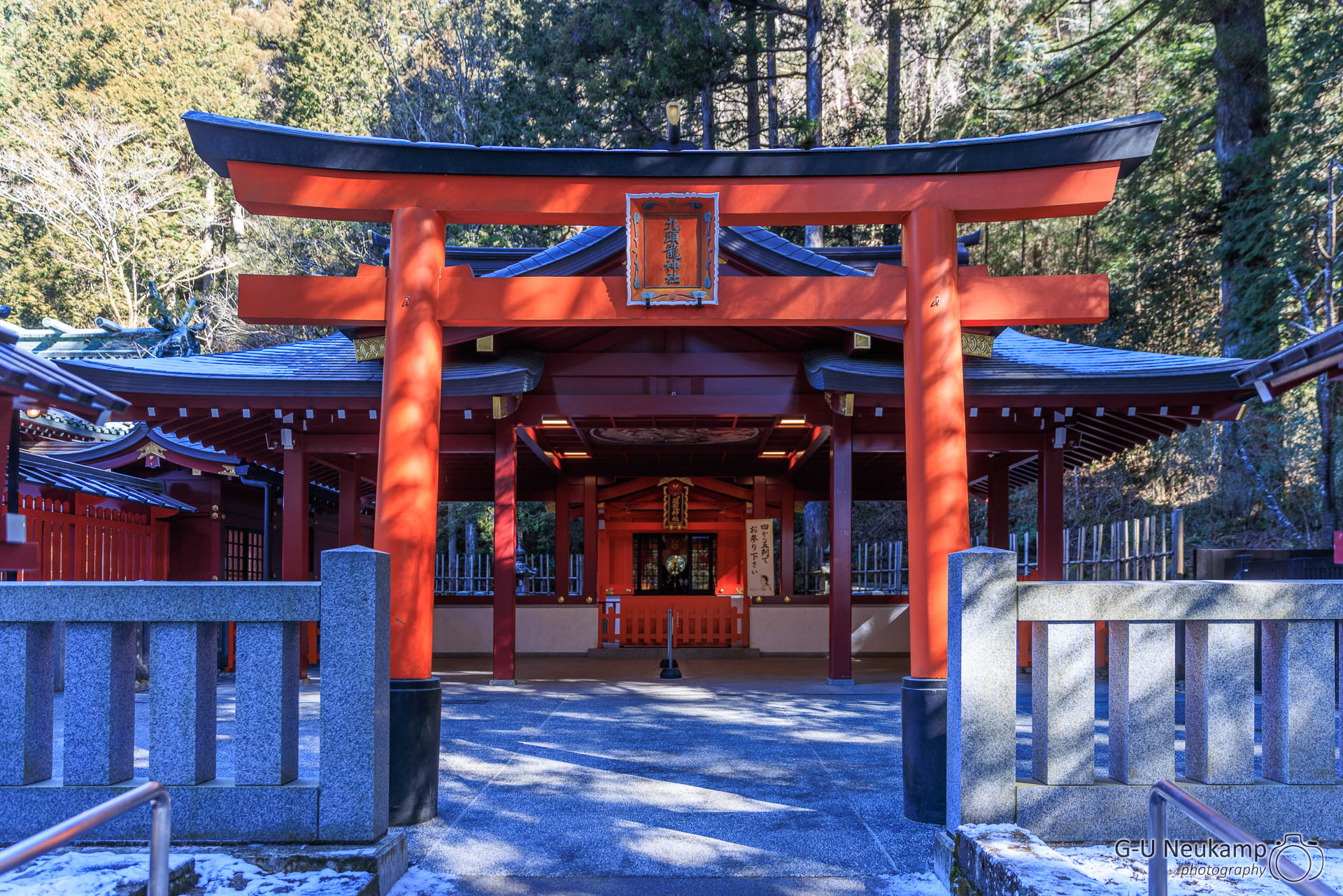
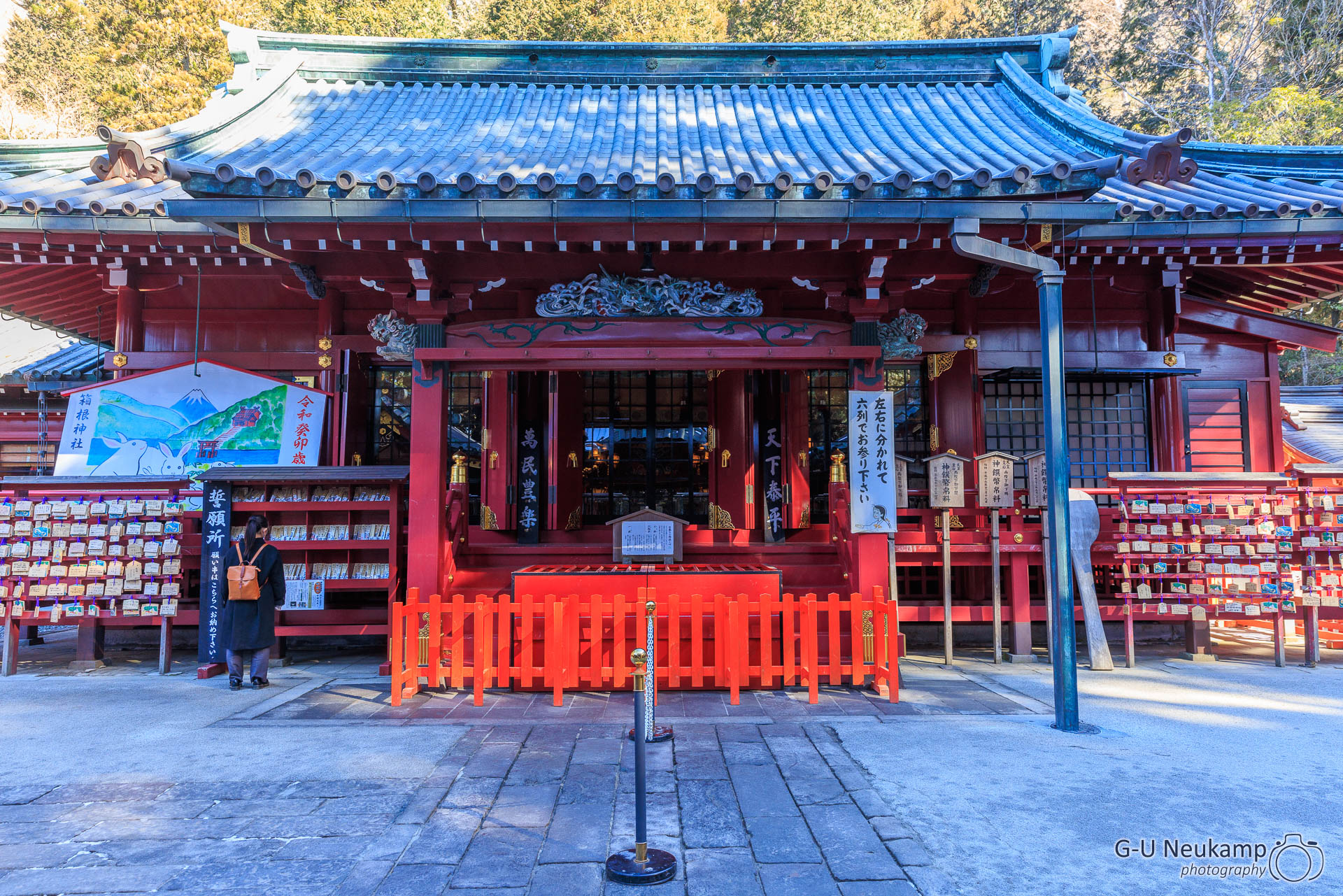
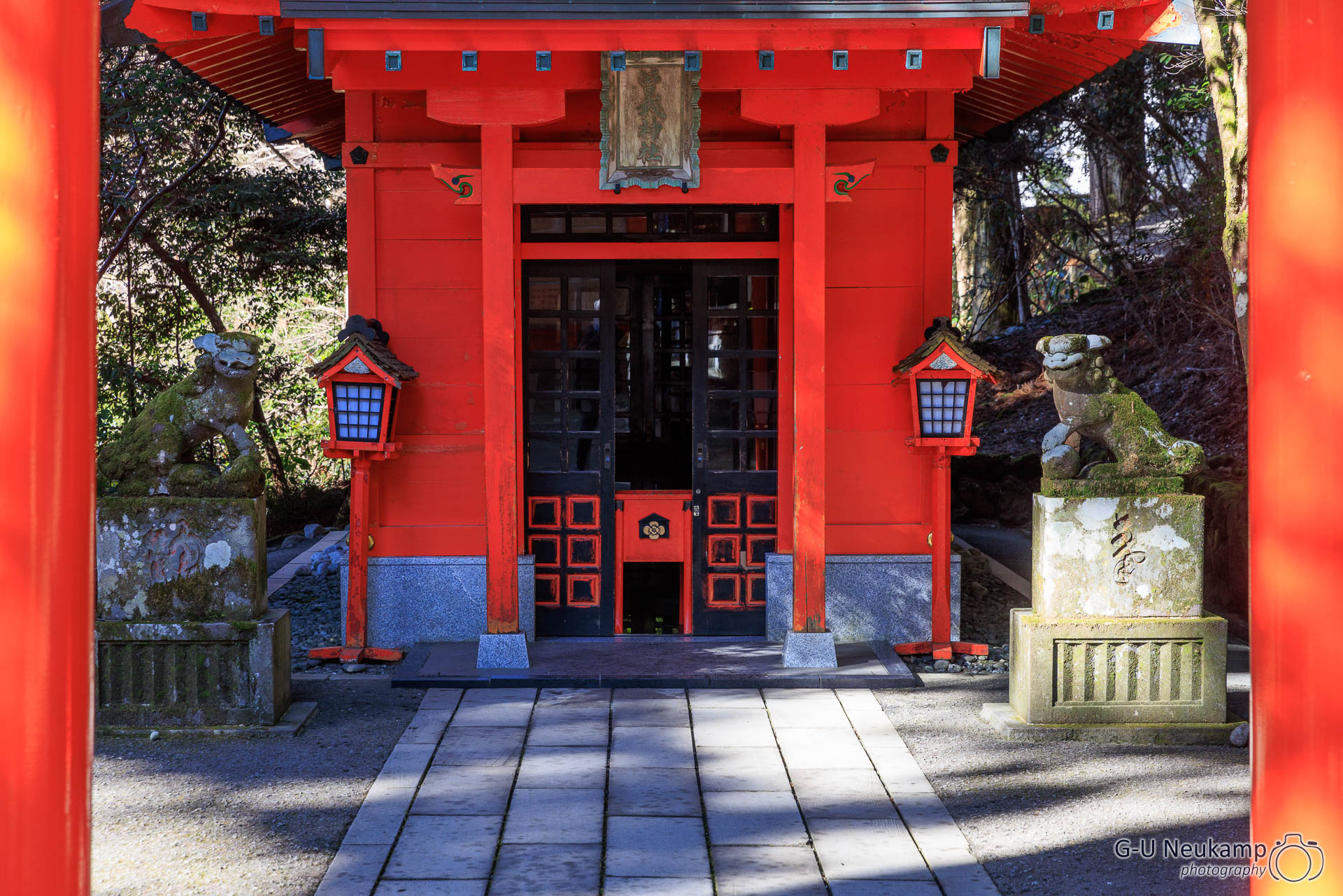
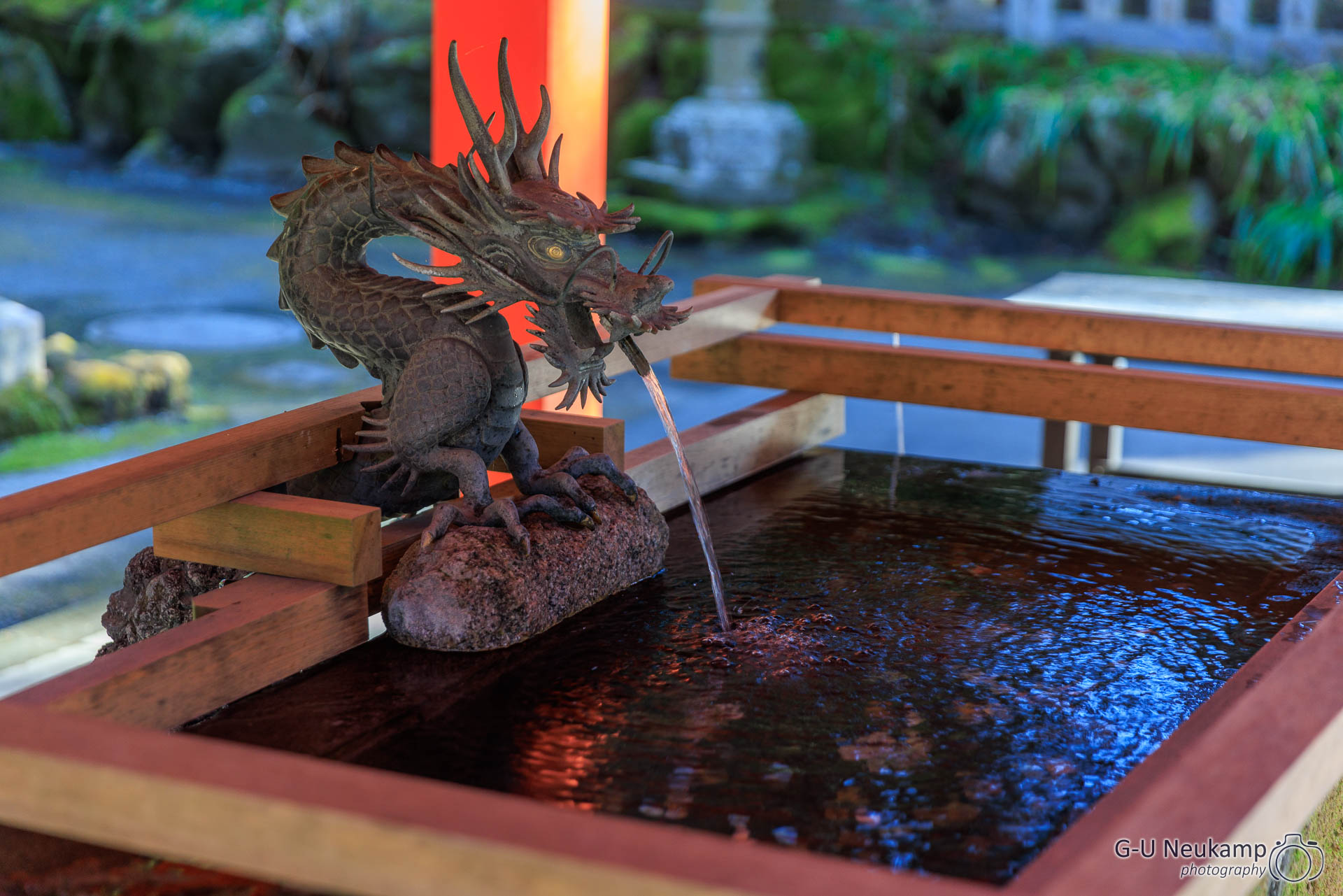
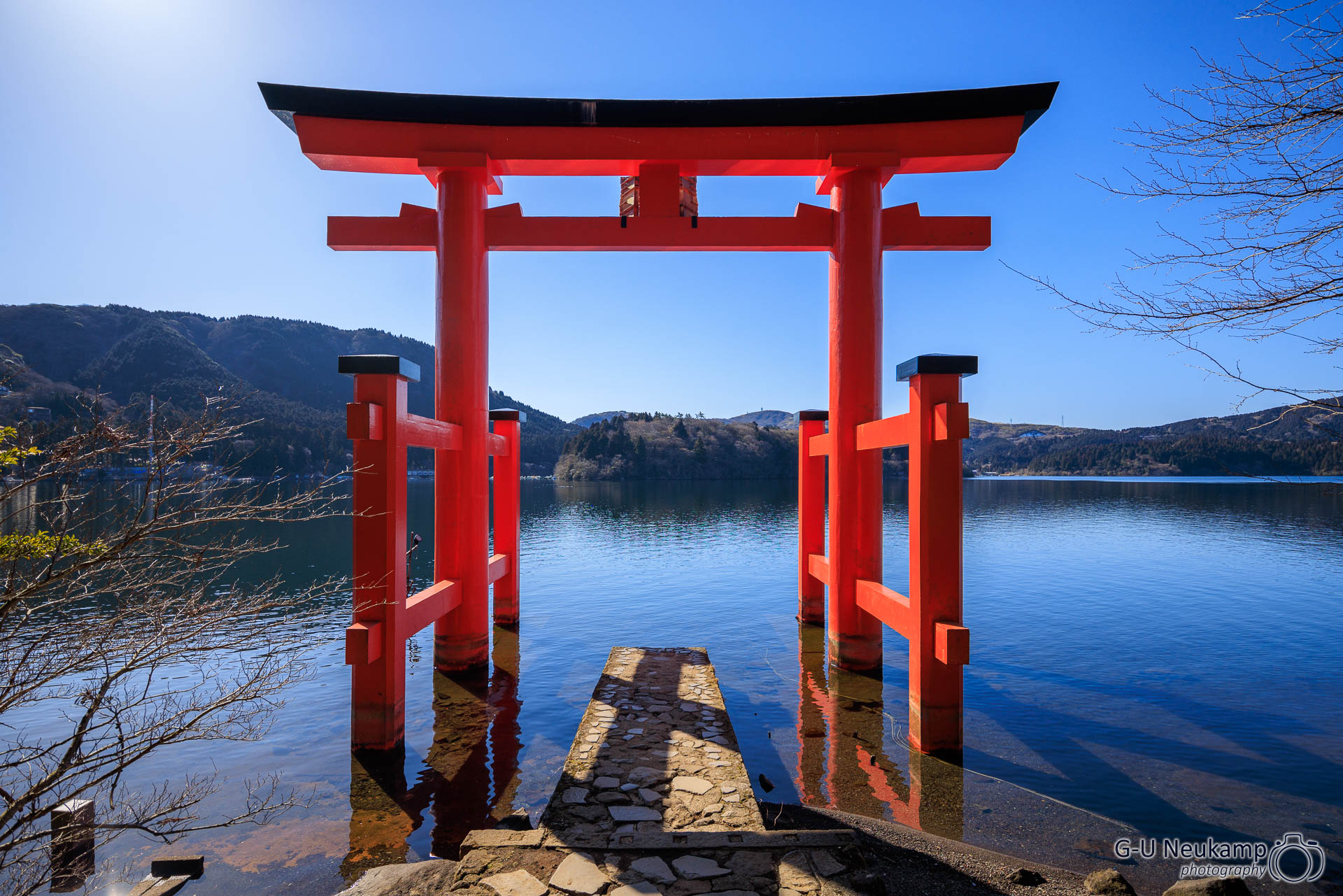
Luise and Simone first picked up their temple stamp for their stamp book there once more. Afterwards we took a photo of the Torii. Then we wanted to have a breakfast in a café.
The shrine was founded in 757 during the reign of Emperor Kōshō. The original shrine is said to have been located at the top of Mount Komagatake. Part of it, now known as Hakone-Mototsumiya, can still be found on the top of the mountain. Later, the shrine was moved to the shore of Lake Ashi. The reason for its construction was said to be the pacification of the nine-headed dragon living at the bottom of Lake Ashi by the priest Mangan.
Minamoto no Yorimasa prayed at this shrine for guidance and protection after his defeat at the Battle of Ishibashiyama during the Gempei War (1180-1185). After he was appointed Shōgun, he became a patron of the shrine. During the Kamakura period (1185-1333), the shrine became very popular with the samurai. This support continued throughout the Sengoku period. Toyotomi Hideyoshi’s army destroyed the shrine during the Battle of Odawara by setting it on fire. Tokugawa Ieyasu had the shrine rebuilt and granted it 200 koku from the proceeds. The Tokugawa shogunate continued to support the shrine. The shrine has had its present form since 1667.
Lake Ashi is a popular destination for tourists due to its good transport links and beautiful views of Mount Fuji. There is a regular ferry service that crosses the lake in a northwest / southeast direction. Some of the ferries are designed like pirate ships.
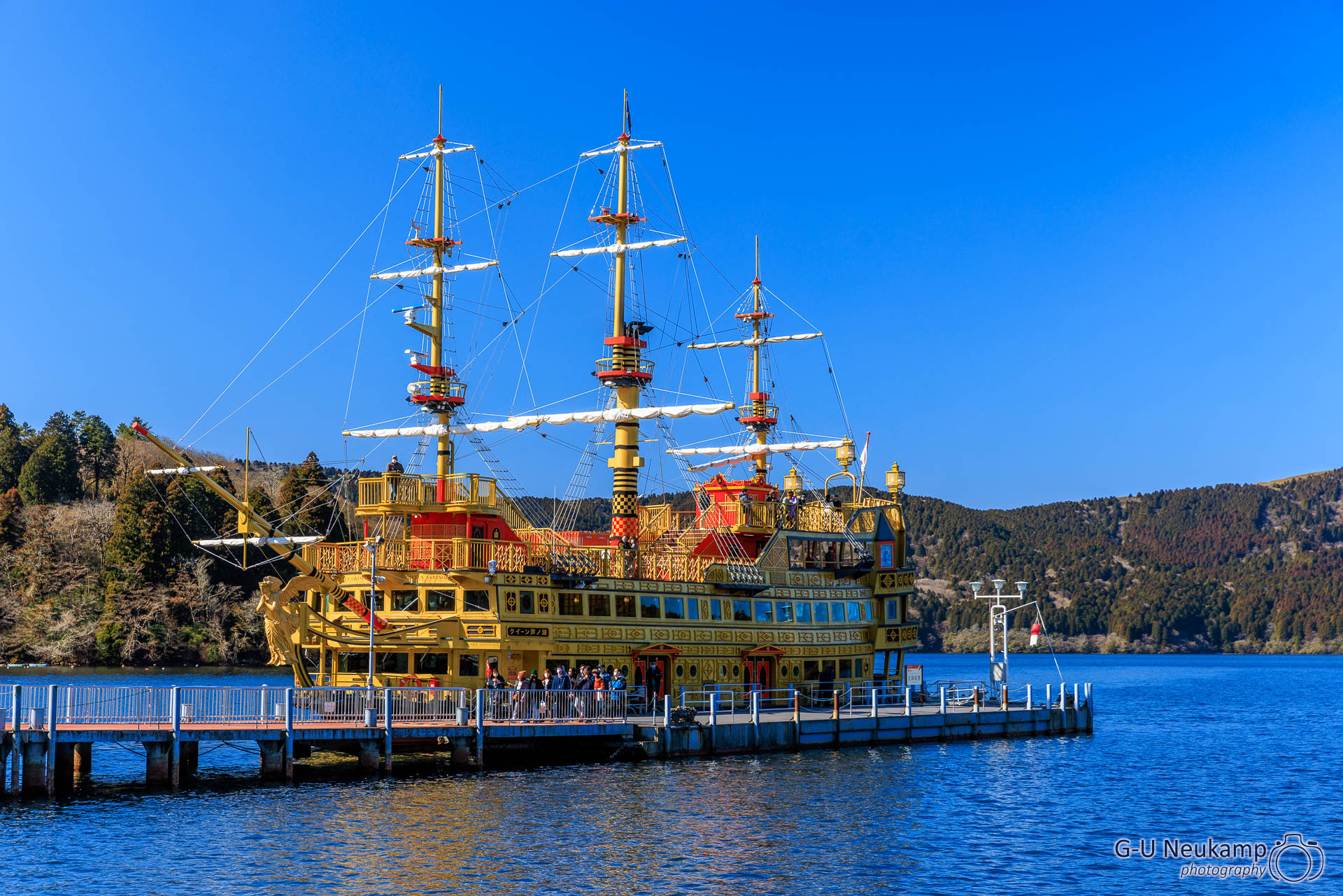
On the north shore of the lake was our next destination, the Tōgendai valley station of the Hakone cable car, which goes up to the active volcanic zone of the same name.
After breakfast at a nice bakery overlooking the lake, we wanted to take the cable car up to the Owakudani mountain station to see the hot sulfur springs and fumaroles there. Eggs are cooked in the sulfur springs, which then turn black. They are said to prolong life. They are sold everywhere up there and are probably a very good source of income.
Unfortunately, the cable car was not operating due to maintenance work, instead a bus ride was offered for the same price. The ticket seller had - apparently impressed by Luise’s good knowledge of the Japanese language - given us the tip that you can go there much cheaper with the regular bus, which we did. Unfortunately, however, the tour to the springs and fumaroles was closed due to a currently increased volcanic activity.
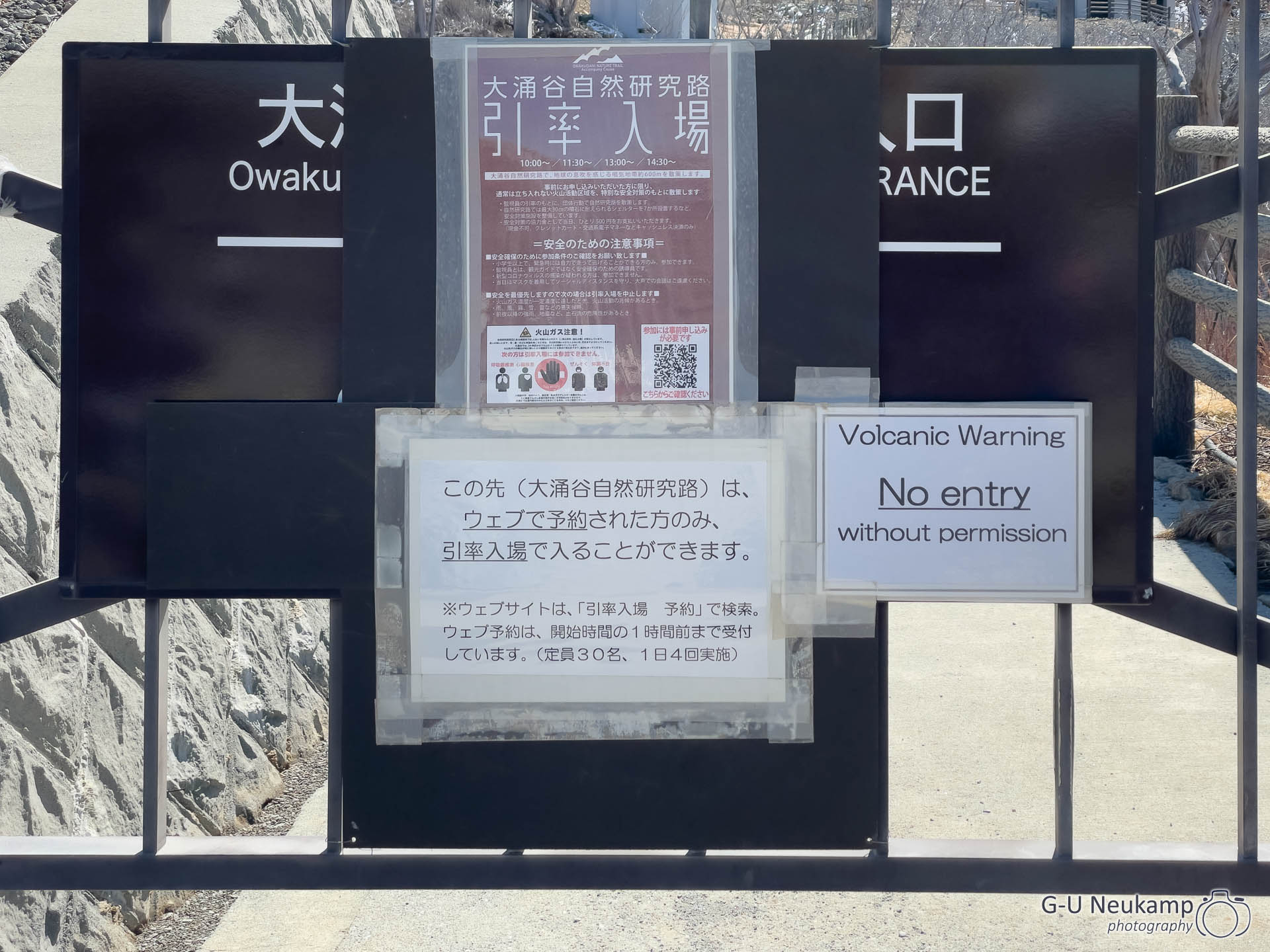
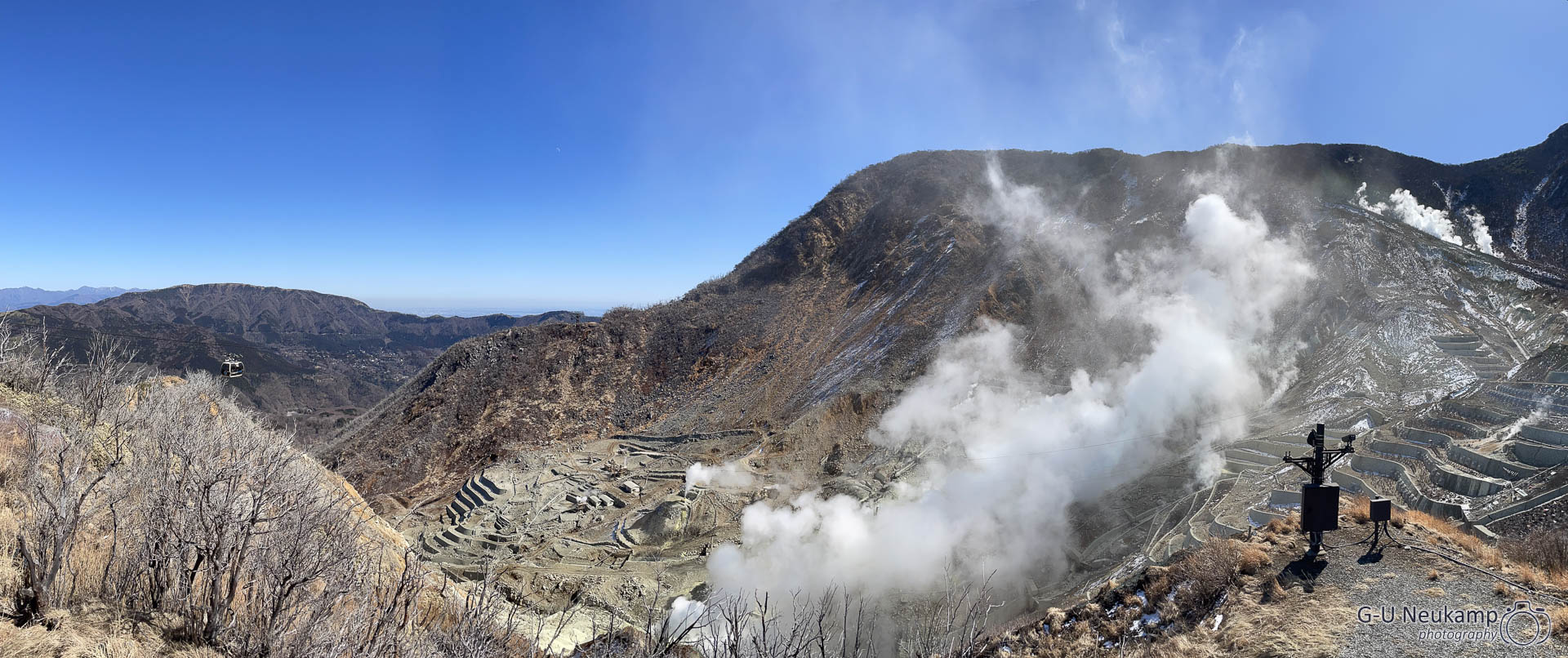
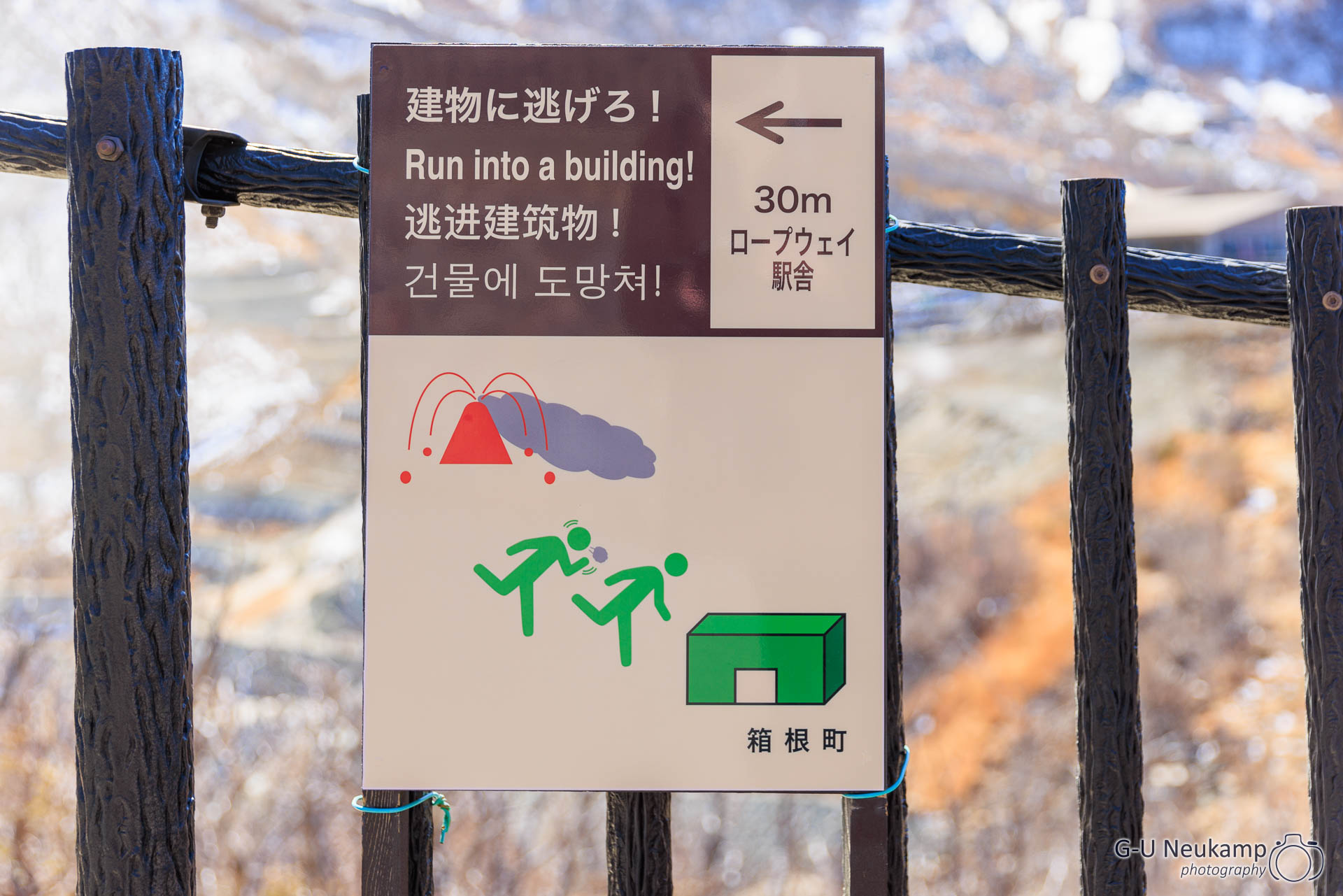
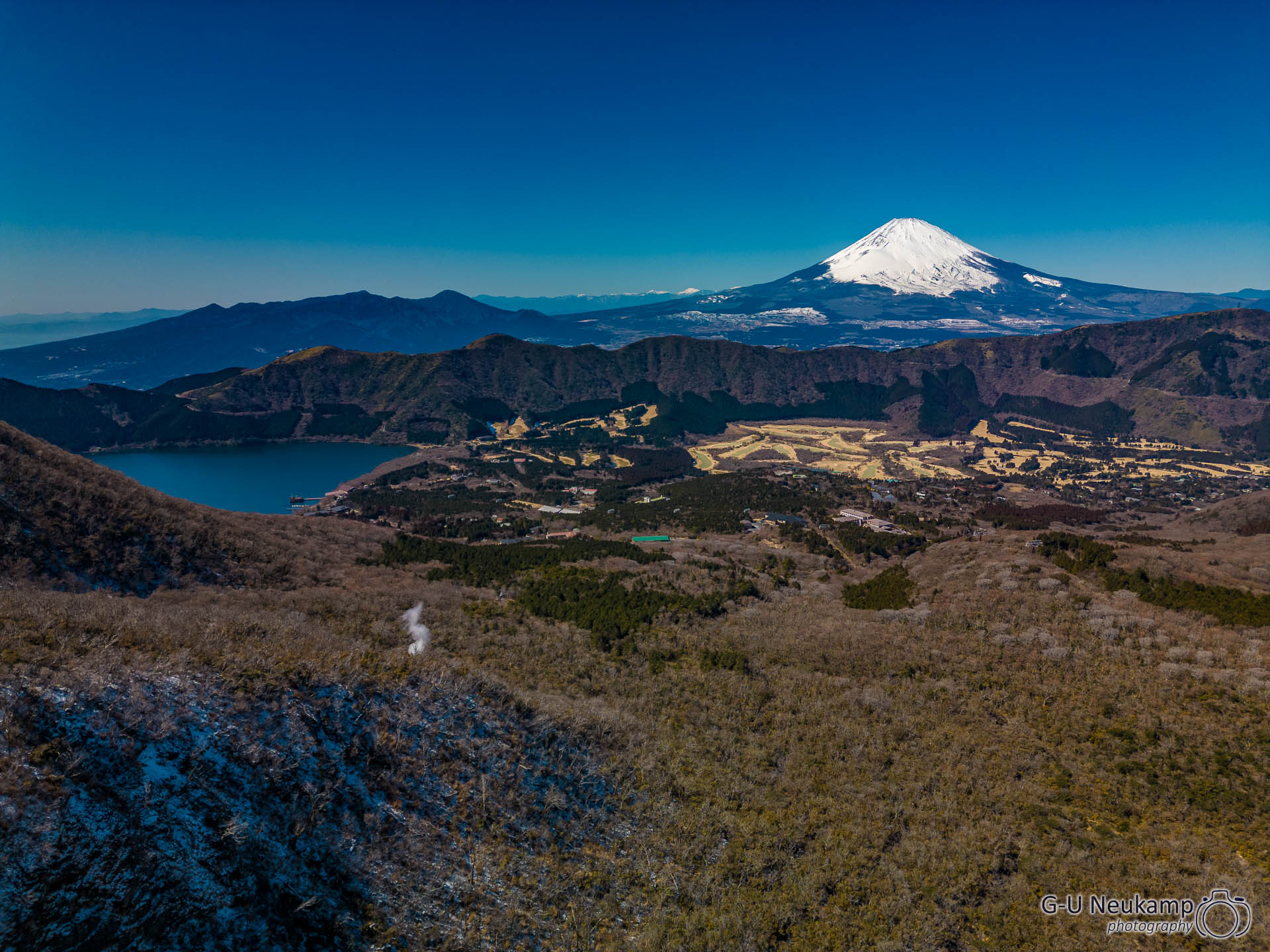
But we could still see the steam clouds rising from the hot springs. With the sulfurous smell, it was already a little eerie. From the top, we had another nice view of Fuji-San with the drone. After a stop at a Starbucks, we drove back to Lake Kawaguchi behind our hotel and visited Nagasaki Park, a small headland with a natural shore area. There were also some cherry trees there. Here again we had a beautiful view of the majestic Fuji-San.
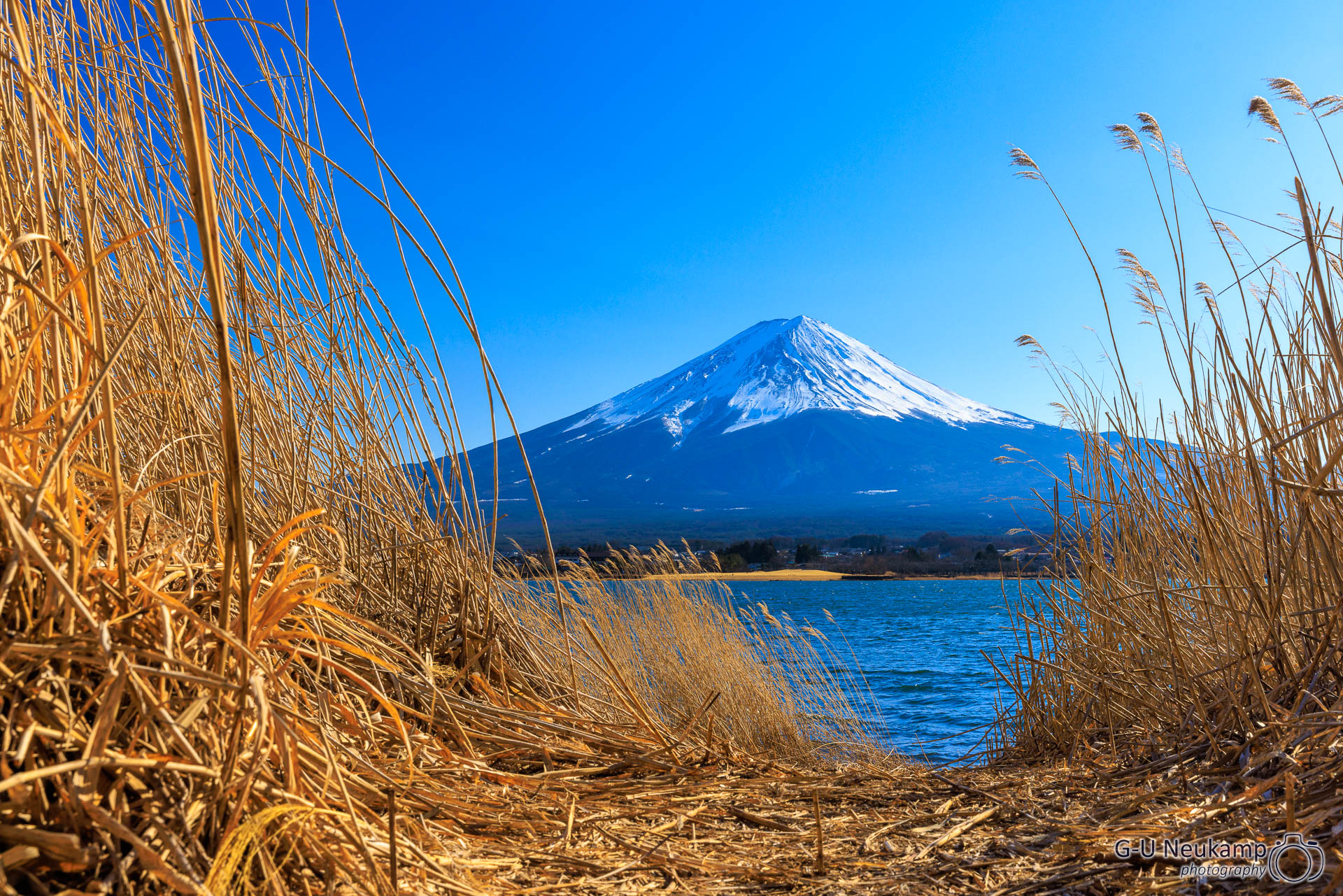
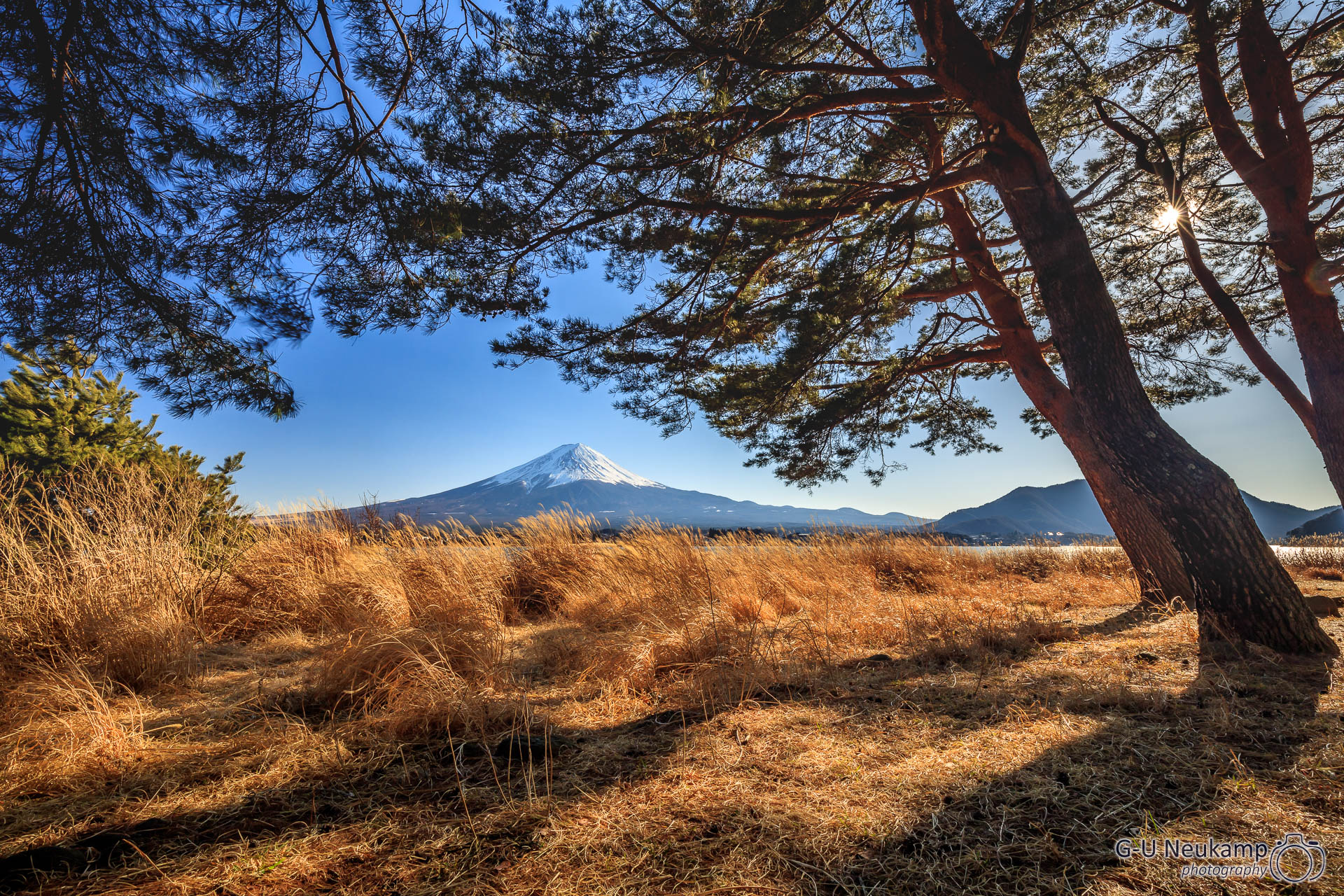
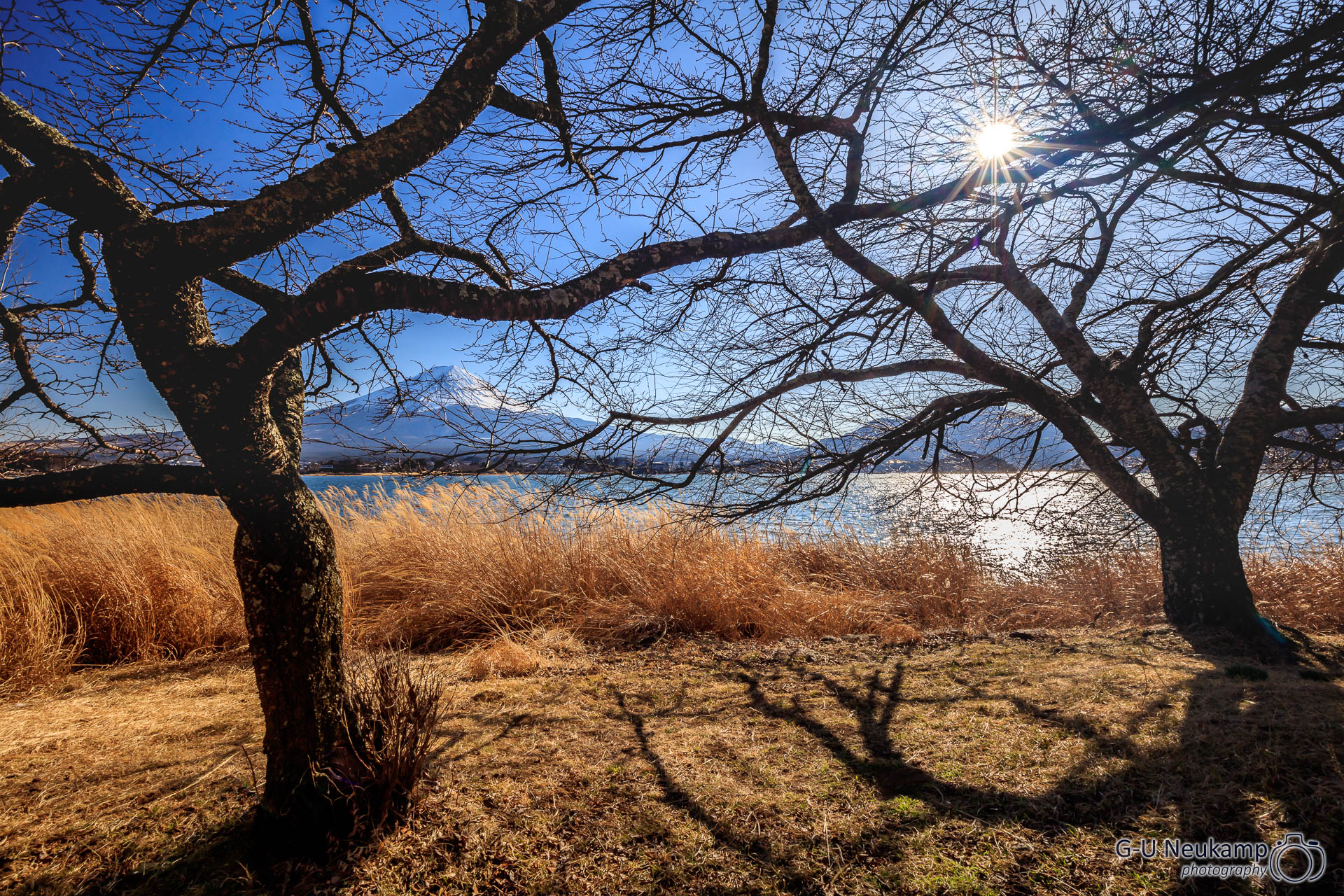
Because of the good weather the day before, we had already visited all our previously planned spots. With still very nice weather, we first drove west again to Lake Saiko. Here, too, we had a beautiful view of Mount Fuji, as did two young Japanese women. Here I let the drone ascend once again.
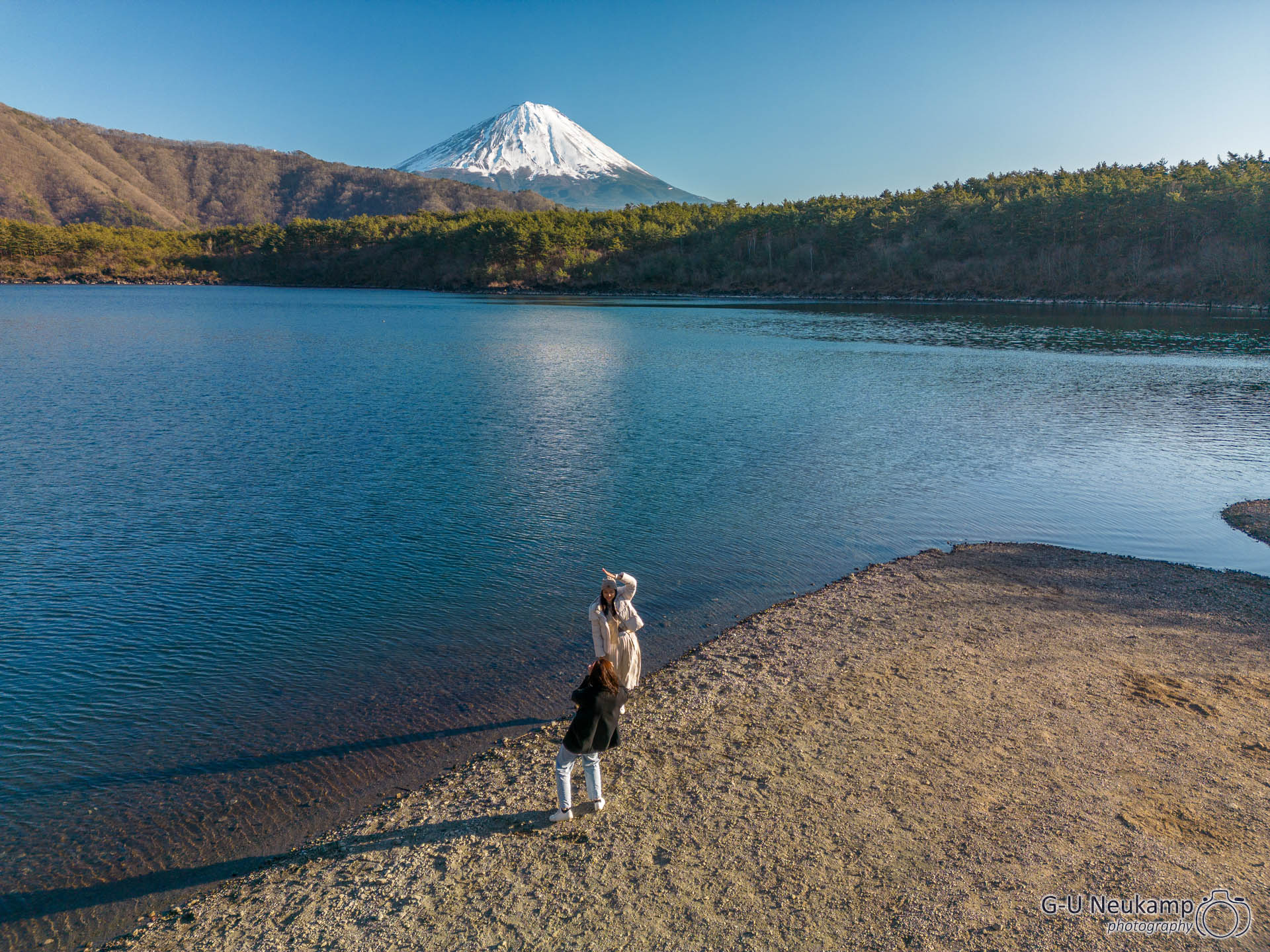
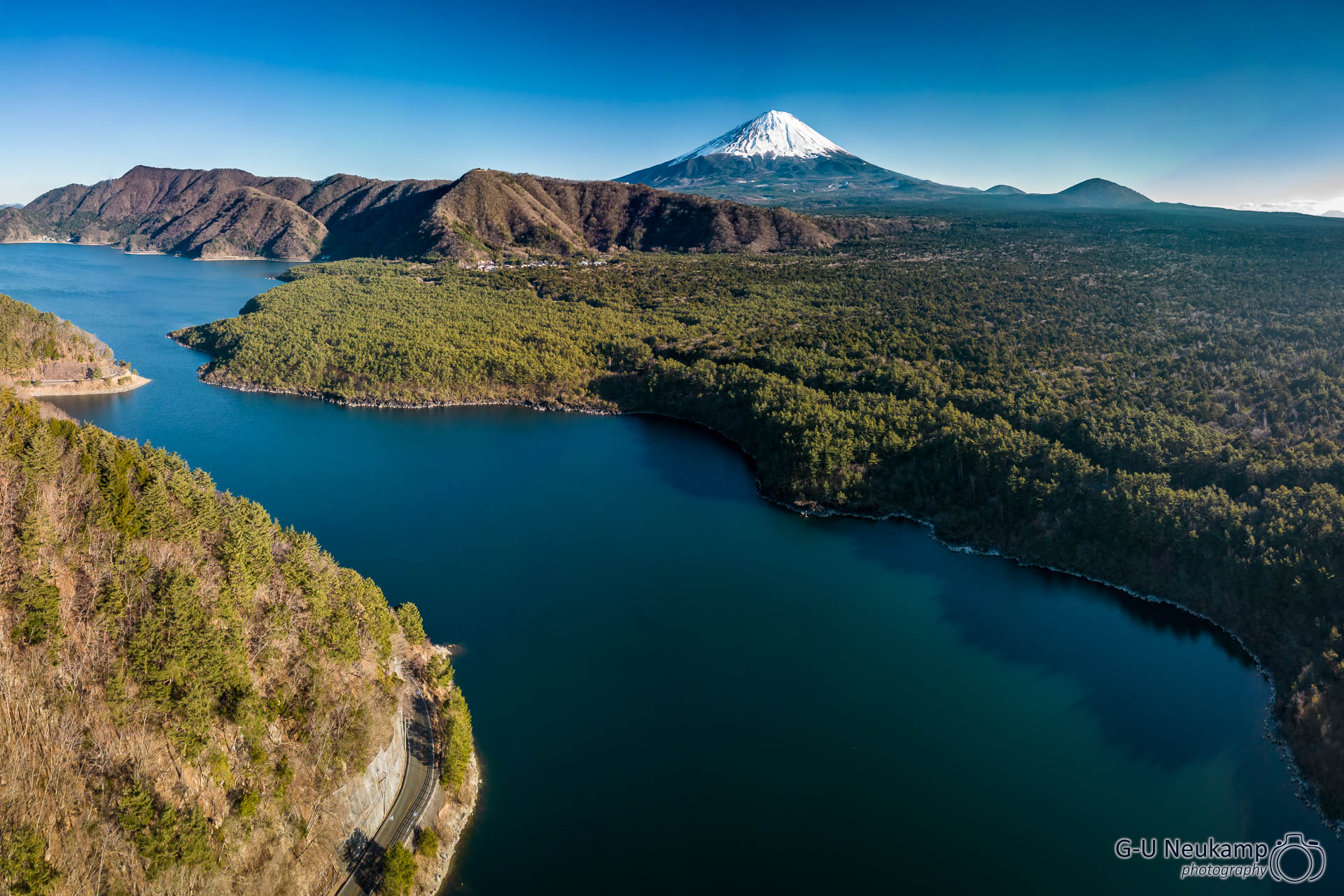
Since the sunset was slowly approaching, we searched the Internet again for the most suitable locations for it and found again and again Lake Yamanakako, which we had already intuitively selected the night before. So we went there again. It was a great experience for us once more and our swans were there to enjoy it as well.


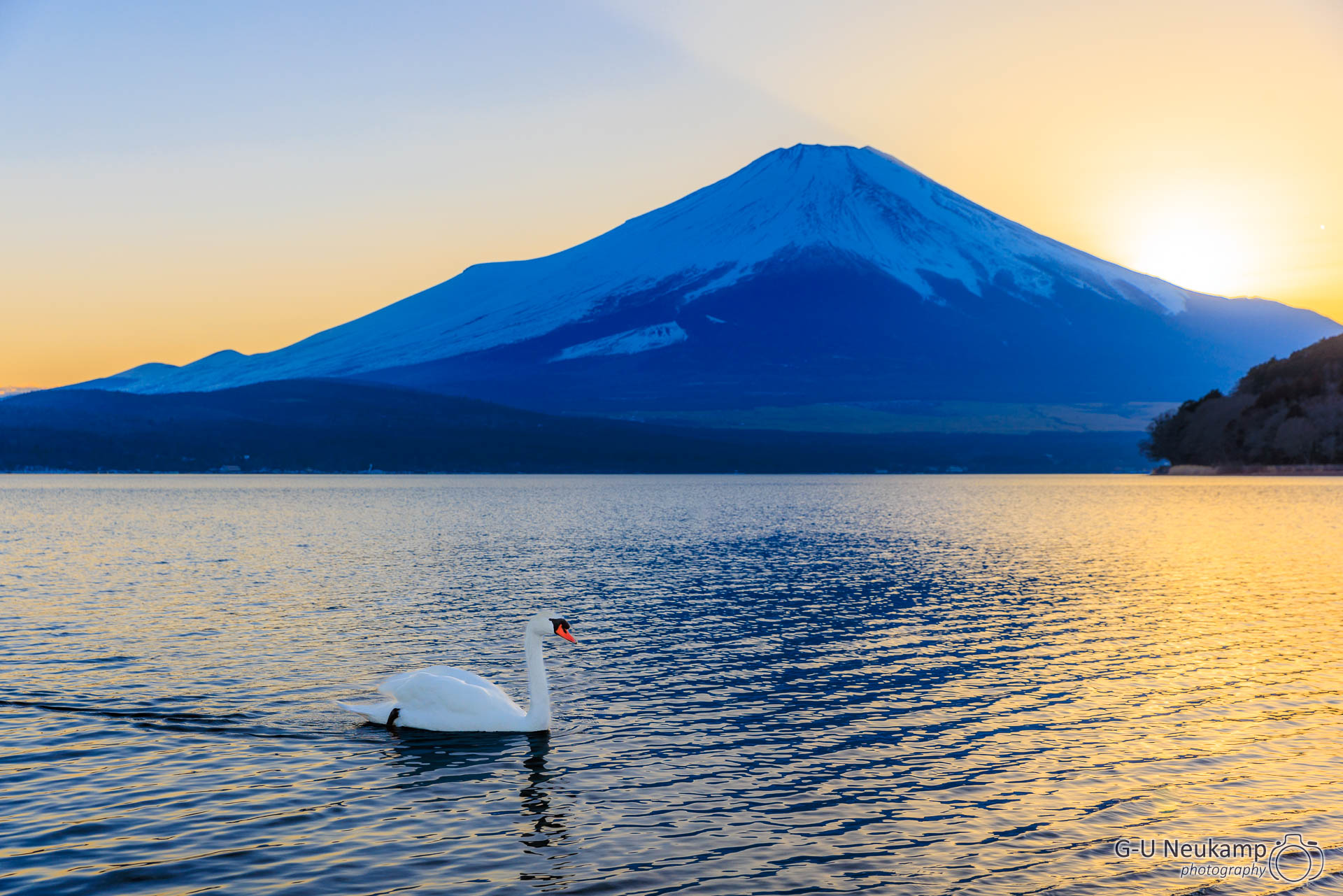
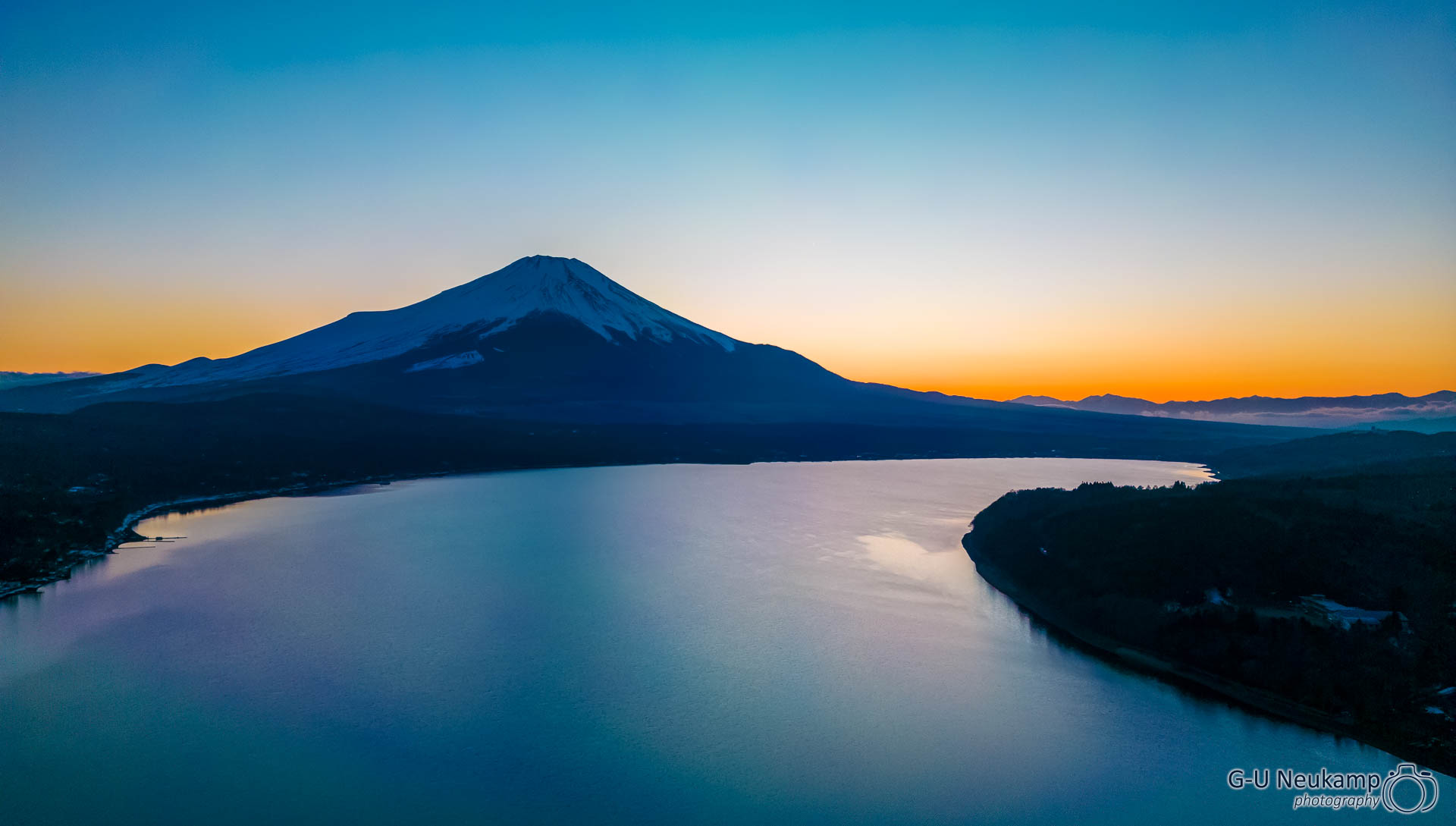
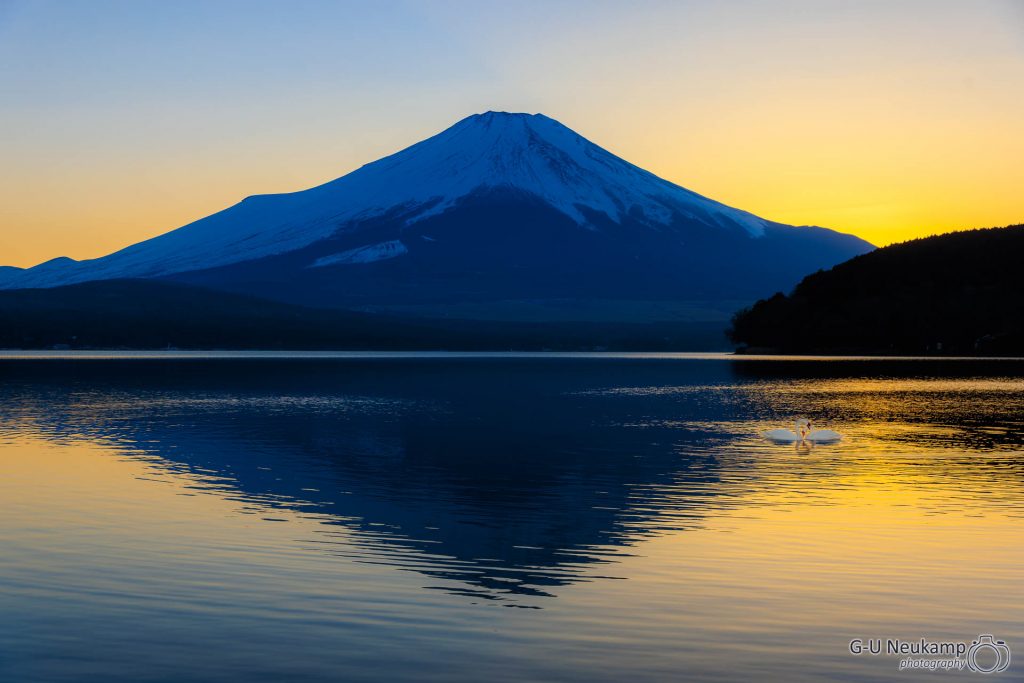
For our last dinner at the Mount Fuji Luise had chosen a Shabu Shabu restaurant for us. There was an “all you can eat” menu for the equivalent of just under 22€. For additional the equivalent of 9€ we got “all you can drink” including alcoholic beverages (quite well sorted incl. beer, wine, liqueurs, whiskey etc.). You had 100 minutes after the first order and could reorder at will via a tablet available at the table. What we also did diligently…
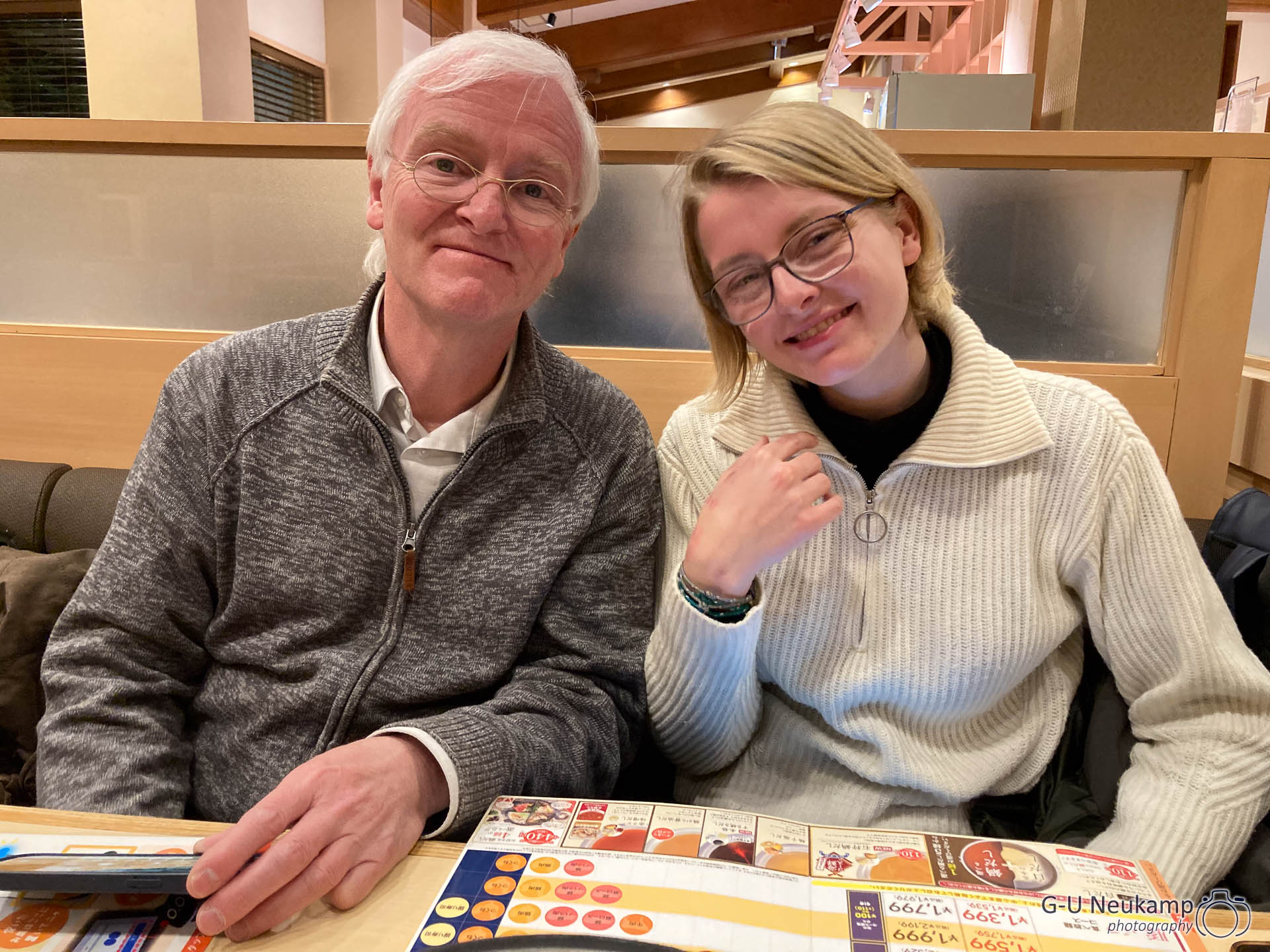
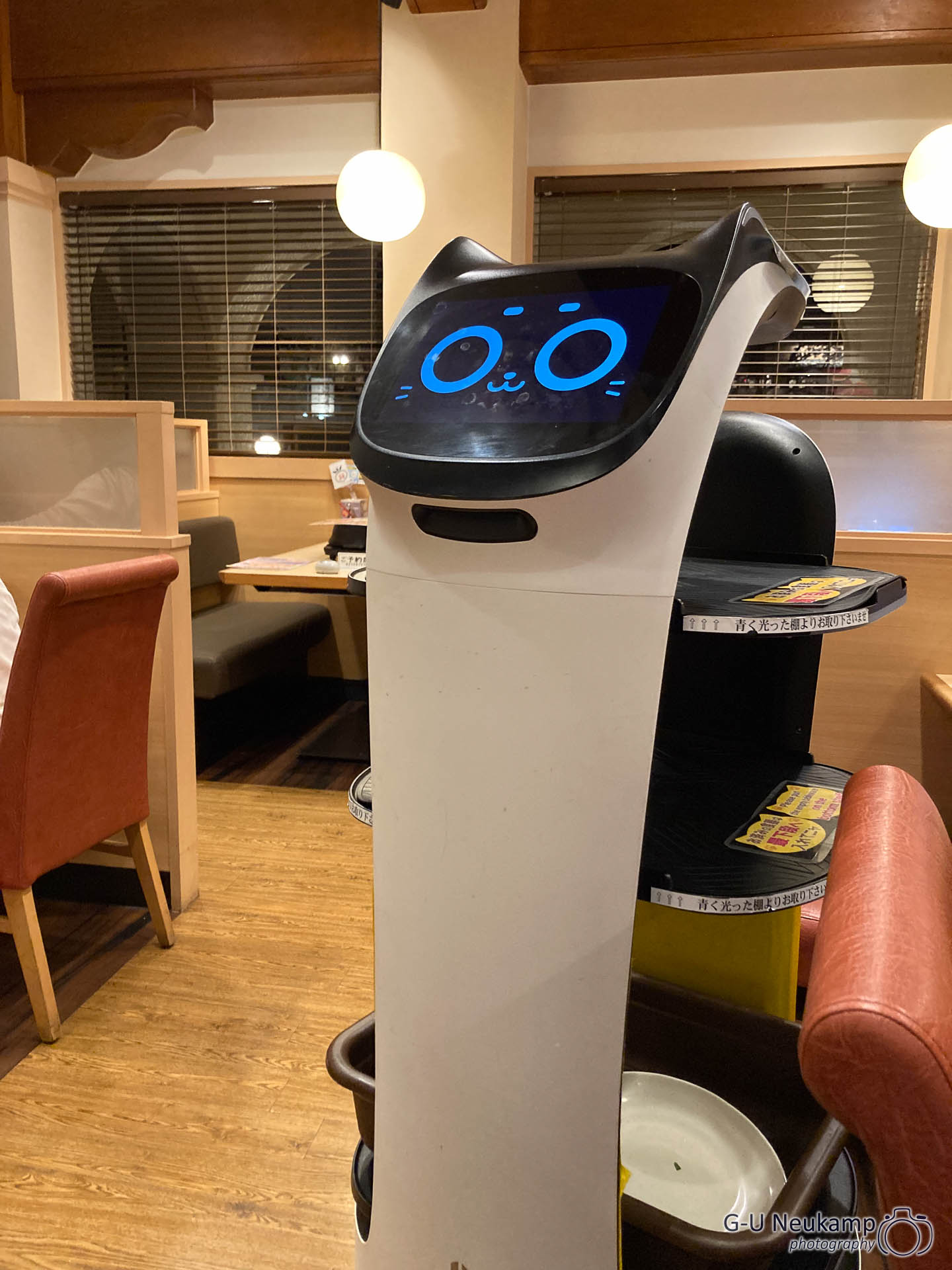
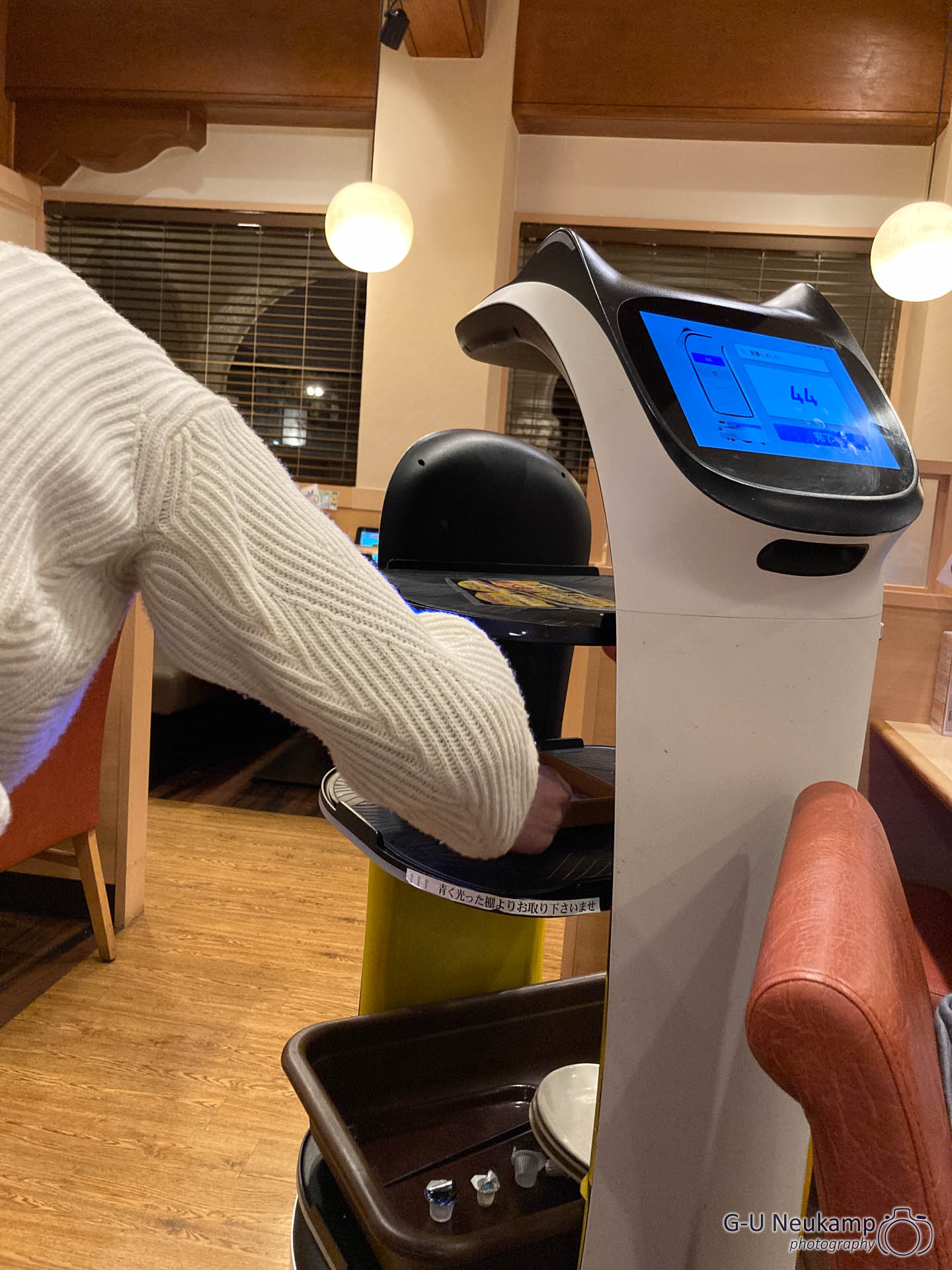
The orders were then delivered by a serving robot. The food was again very tasty and we had a very amusing evening. Somehow Luise got us back to the hotel safe and sound.
